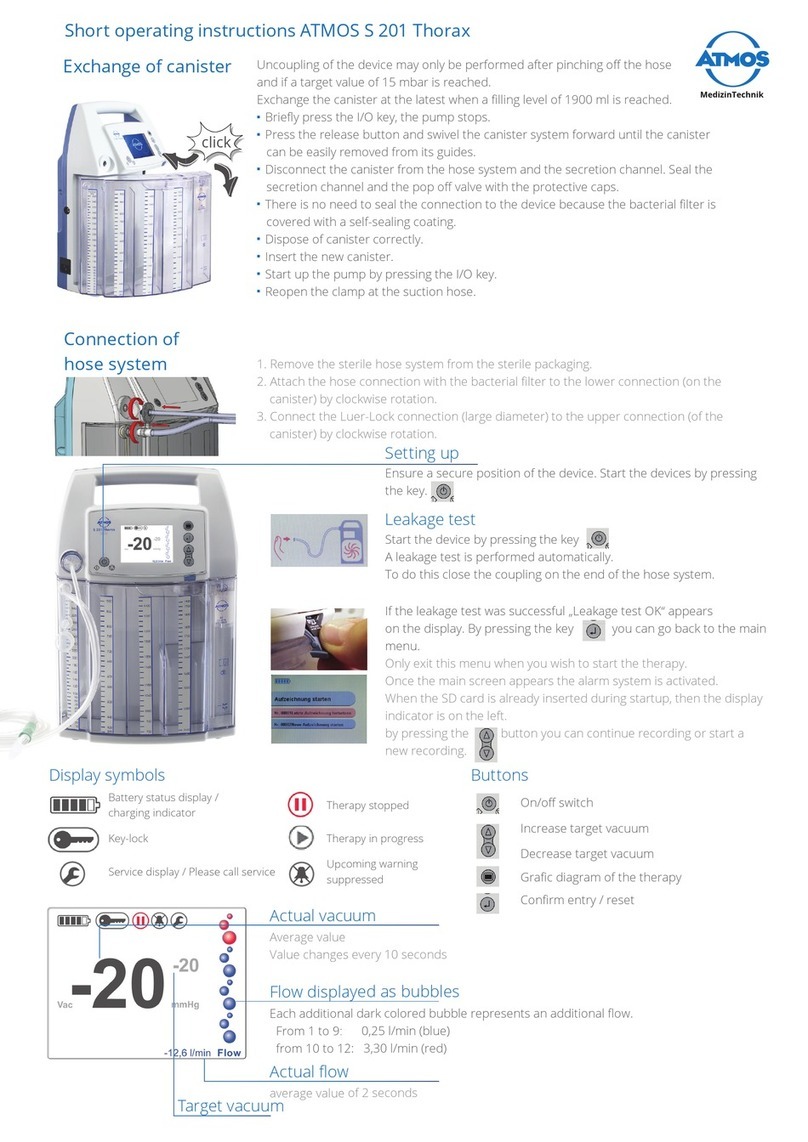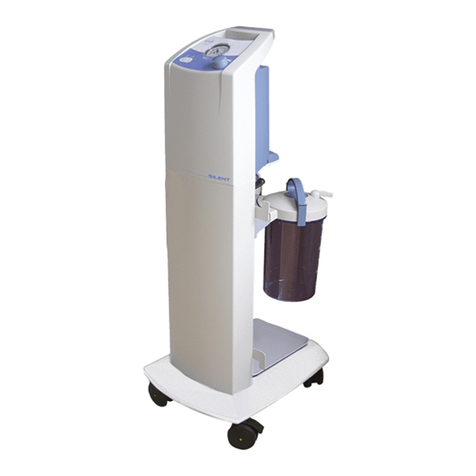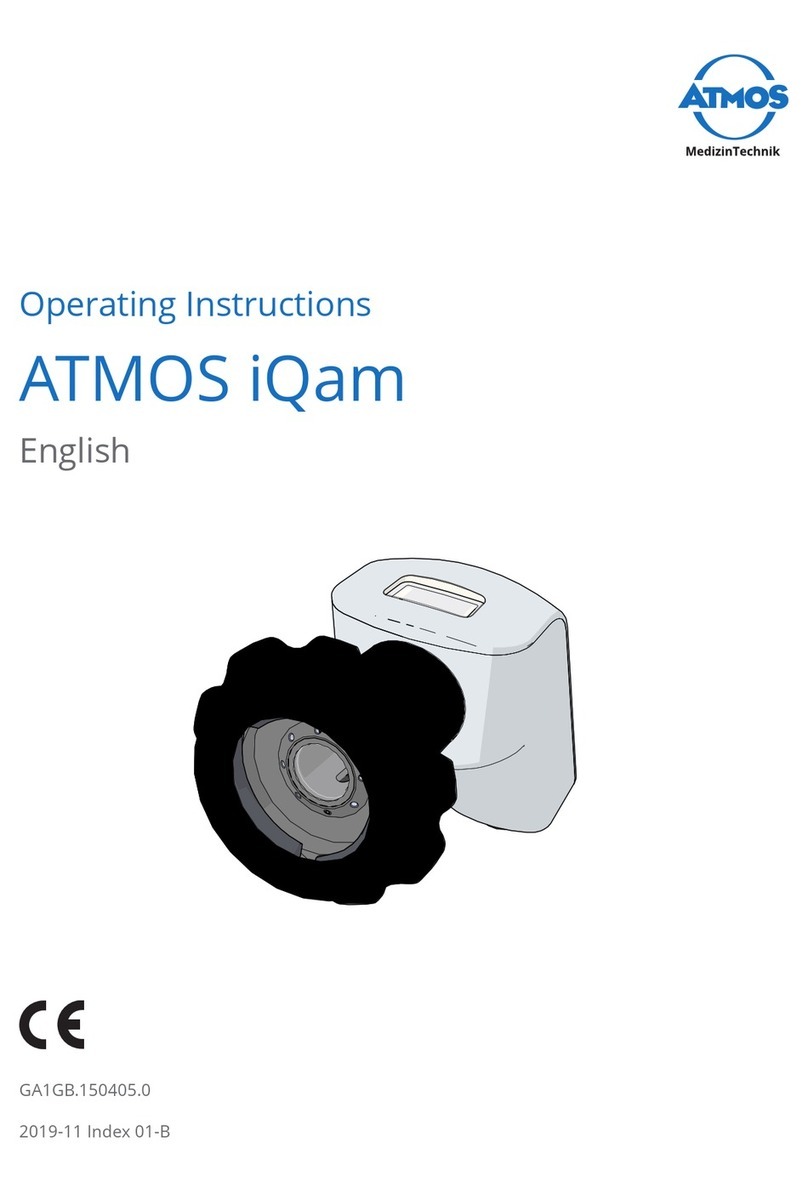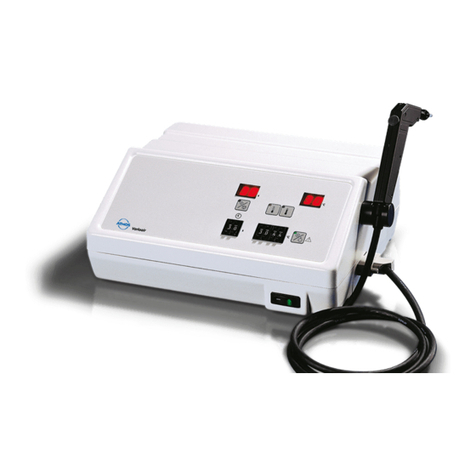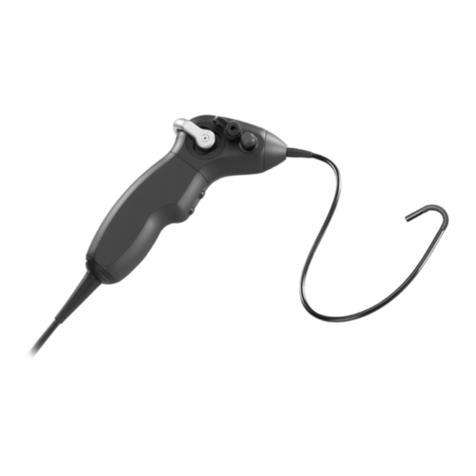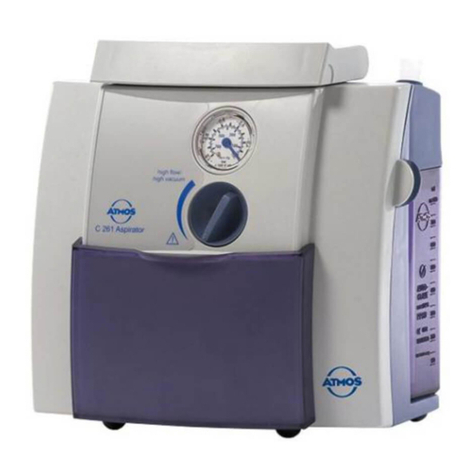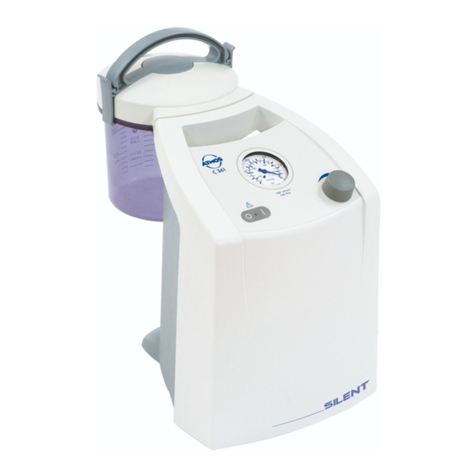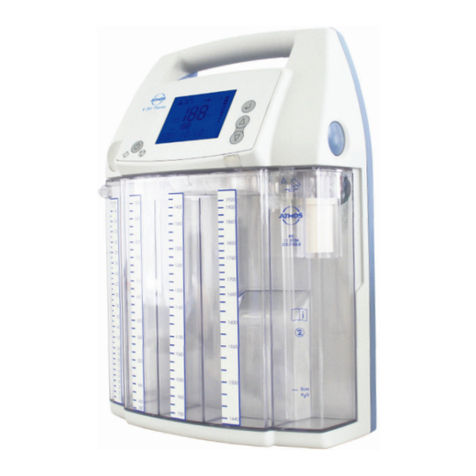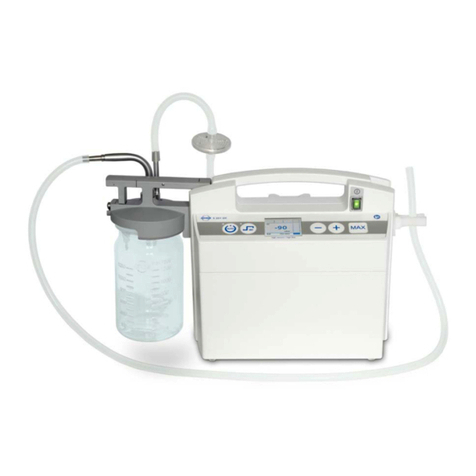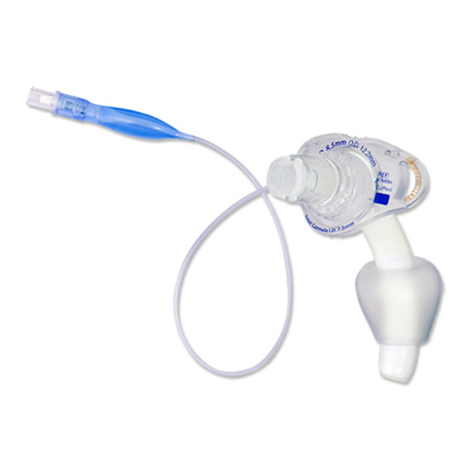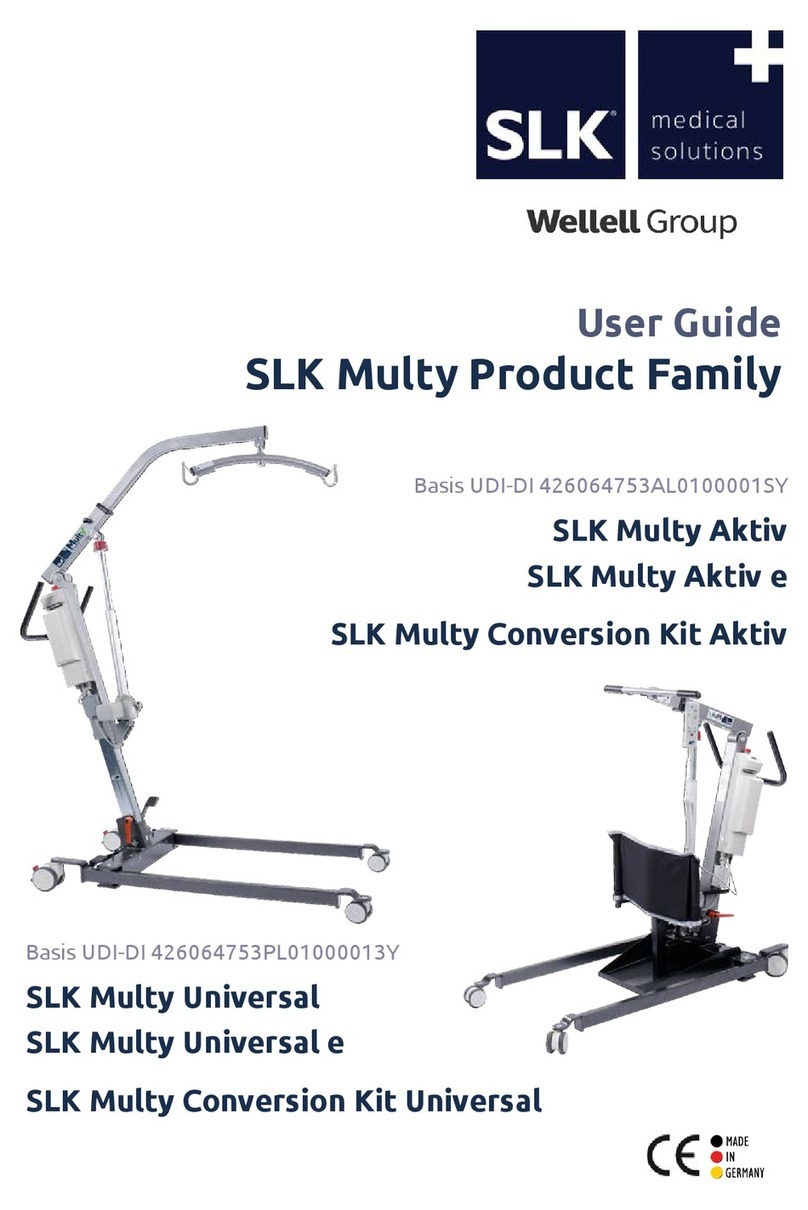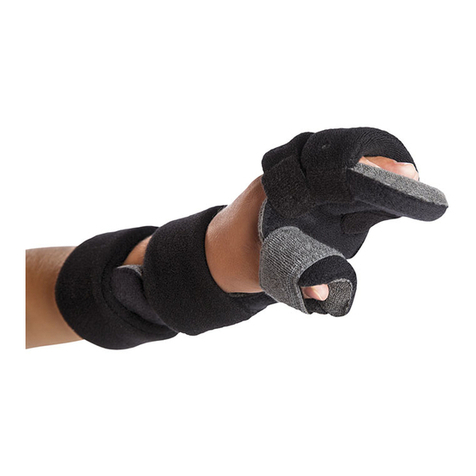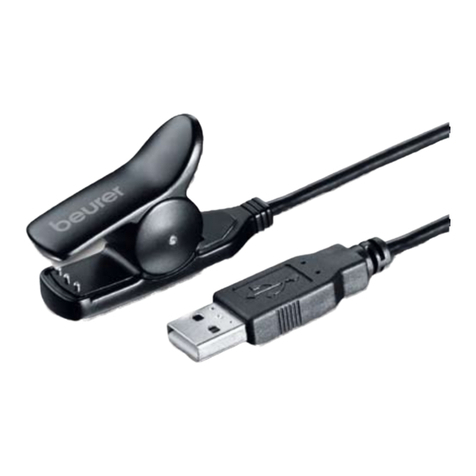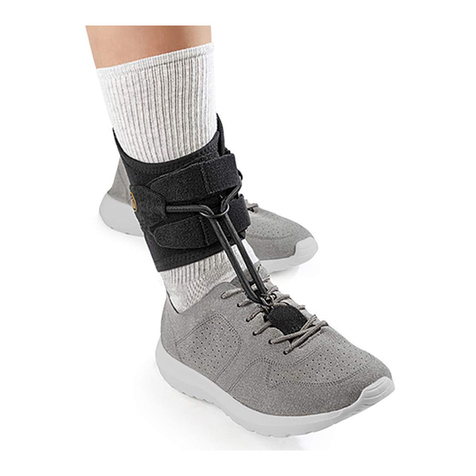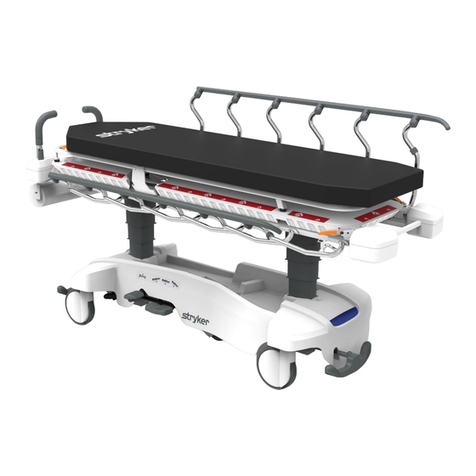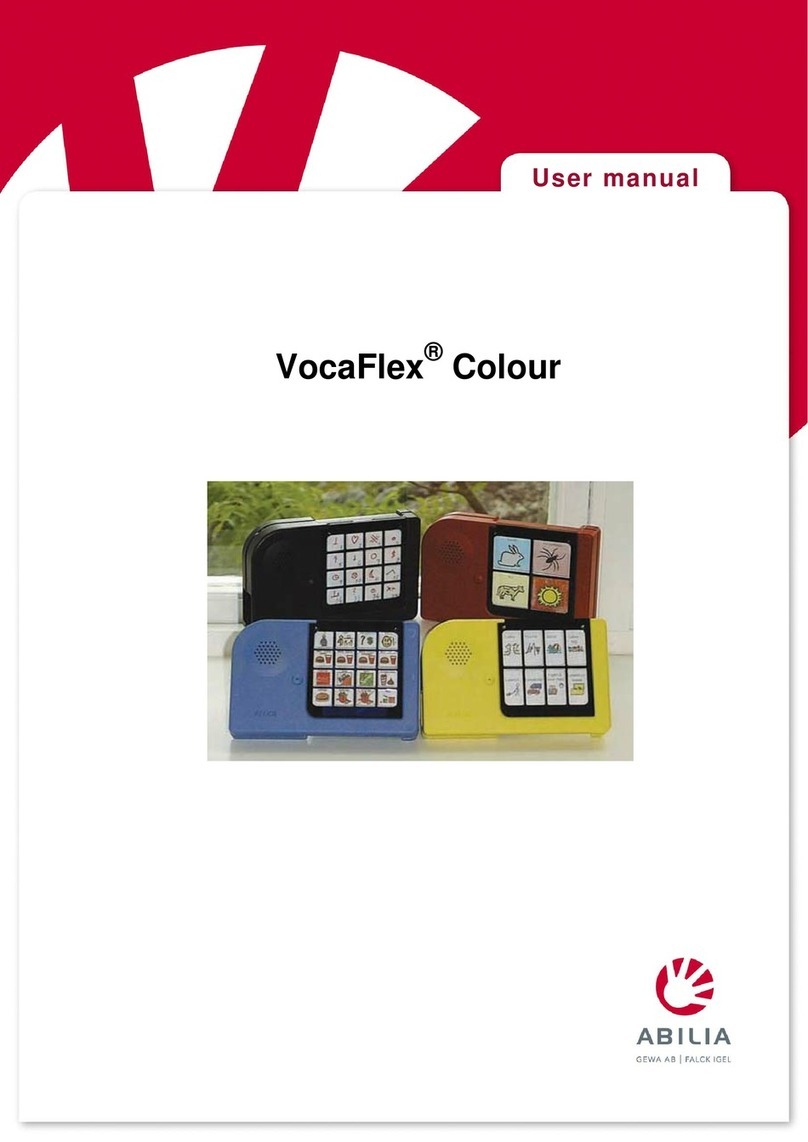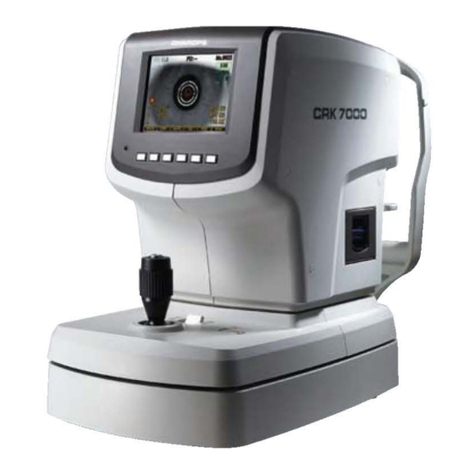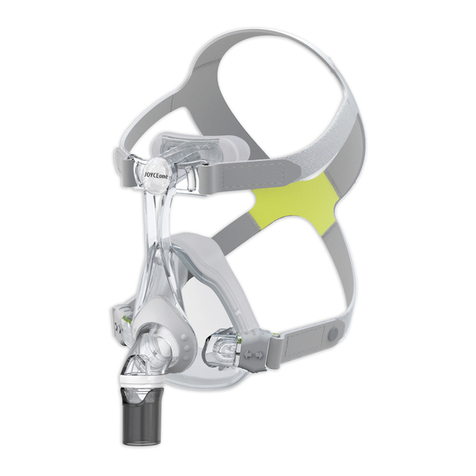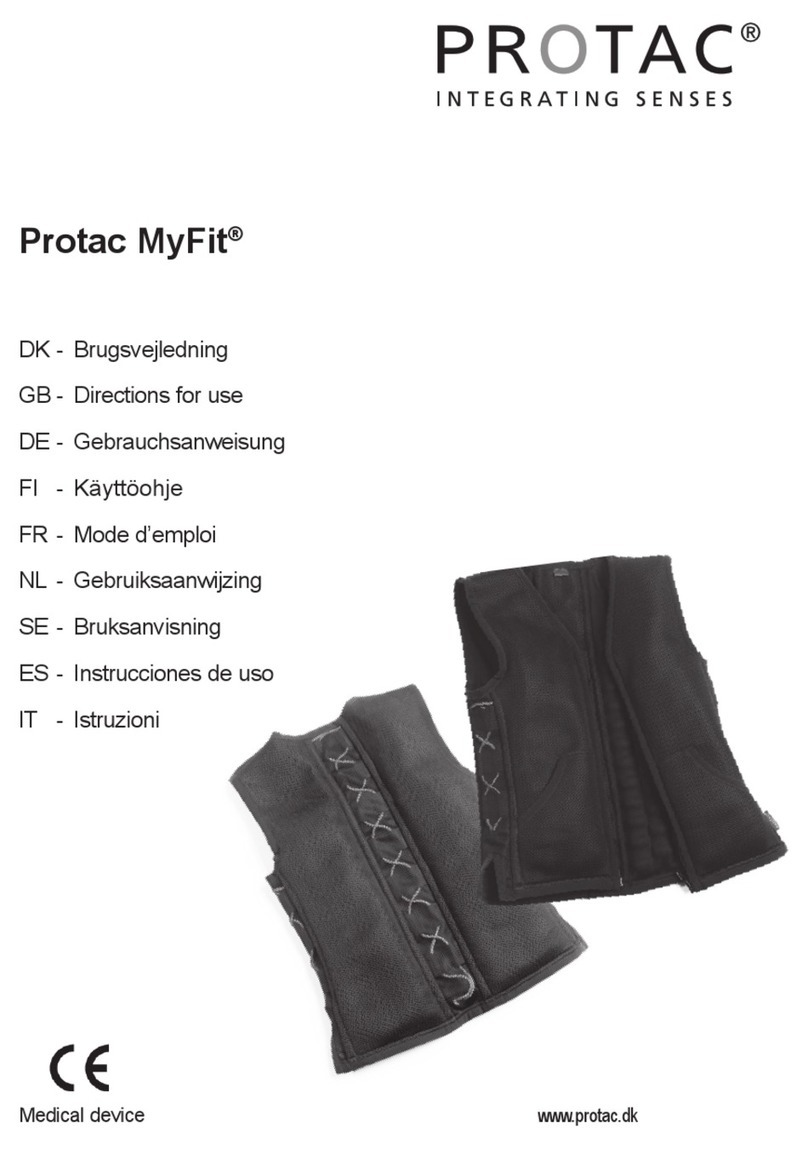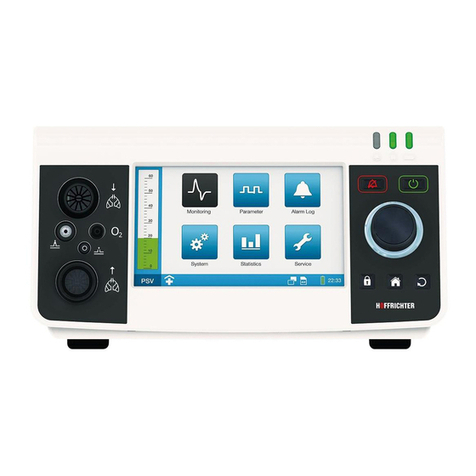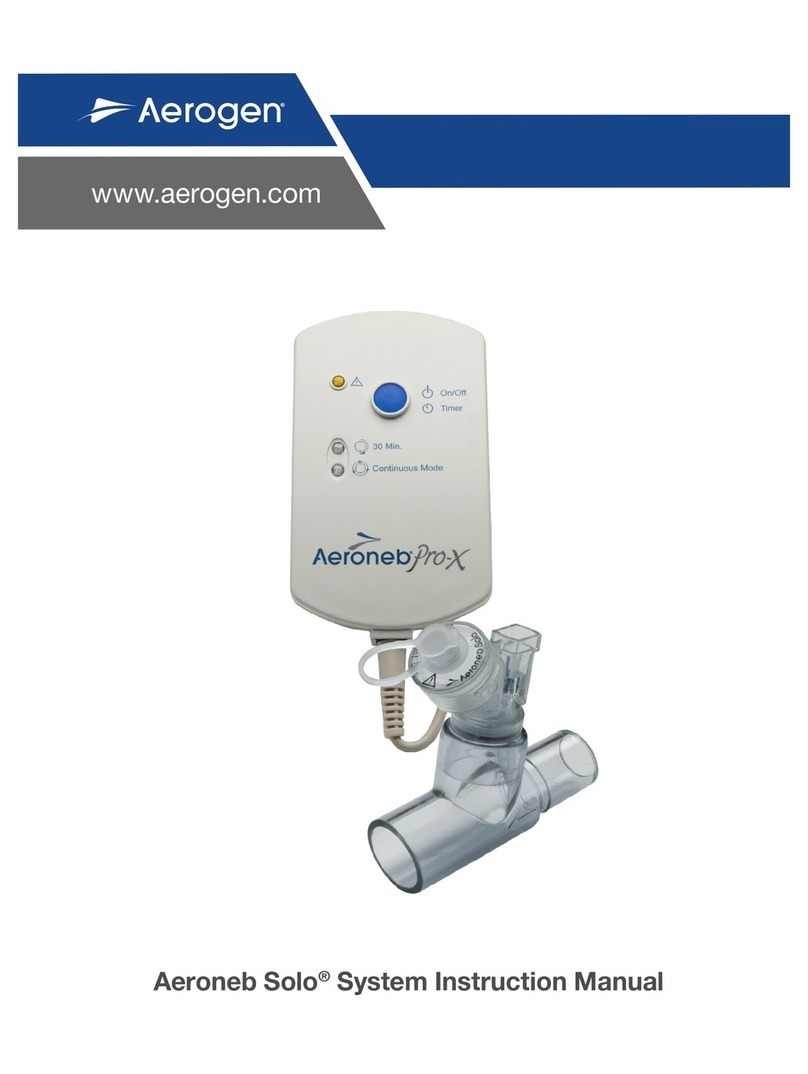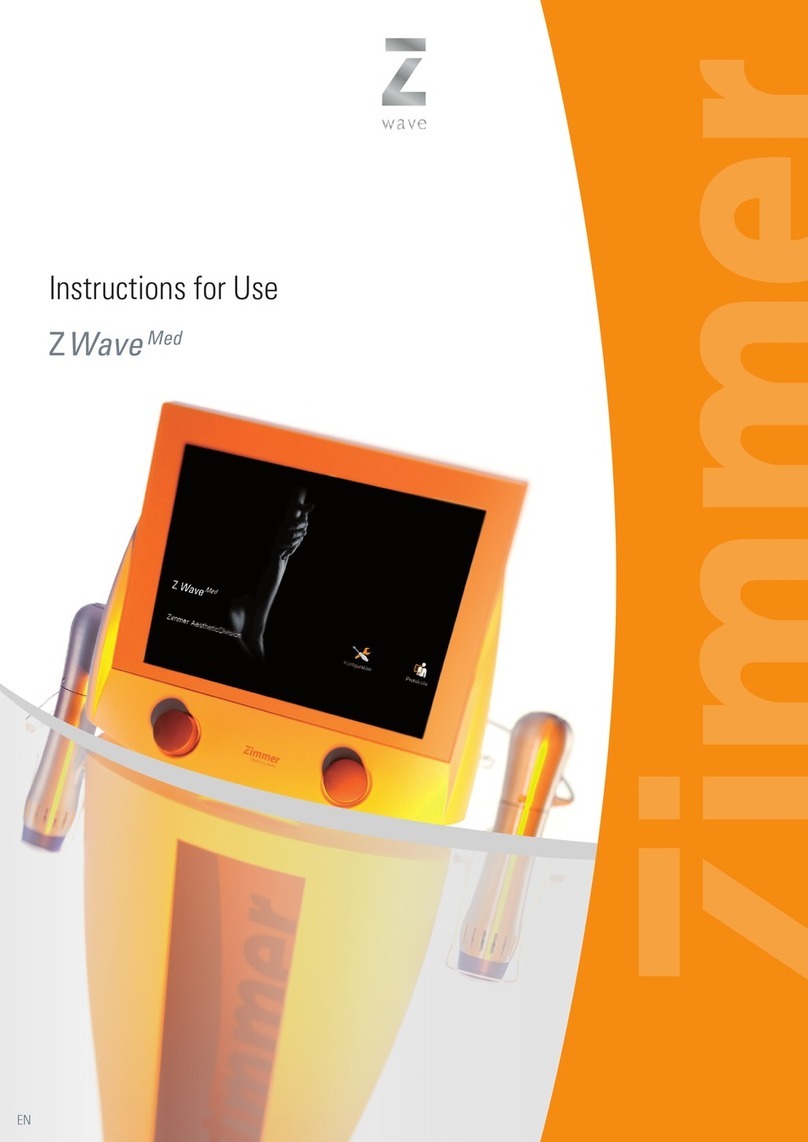Atmos A 161 User manual

English
ATMOS®
A 161 / A 261 /
C 161 / C 261 Aspirator
2014-08 Index: 32
Operating instructions
313.0200.B
313.0265.B
313.0202.B
313.0203.B
313.0300.B
313.0365.B
313.0302.B
313.0303.B
313.0100.B
313.0165.B
313.0102.B
313.0103.B
313.0000.B
313.0065.B
313.0002.B
313.0004.B
MedizinTechnik

2
ATMOS
Telefon: + 49 7653 689-0
Fax:
+ 49 7653 689-392 (Vertrieb Inland)
+ 49 7653 689-391 (Export)
e-mail: [email protected]
Internet: http://www.atmosmed.de
MedizinTechnik GmbH & Co. KG
Ludwig-Kegel-Str. 16
79853 Lenzkirch
Deutschland / Germany
Further information, accessories, consumables and
spare parts are available from:
Table of contents
8.0 Cleaning/Disinfection .......................................... 12-16
8.1 Basic information.......................................................... 12
8.1.1 Bacterial lter .............................................................. 12
8.1.2 Suction hose, hose connector and vacuum hose ....... 12
8.1.3 Fingertip ....................................................................... 12
8.1.4 Secretion canister ........................................................ 12
8.1.5 Canister lid .............................................................. 12-13
8.1.6 Device surface ............................................................ 13
8.1.7 Rinsing Canister........................................................... 13
8.1.8 Accessories.................................................................. 13
8.2 Oversuction ................................................................. 13
8.3 Cleaning instructions.................................................... 13
8.4 Recommended instrument disinfections .................... 14
8.5 Recommended surface disinfections .......................... 14
8.6 Cleaning and servicing plan ................................... 15-16
9.0 Maintenance and servicing ....................................... 17
9.1 Maintenance and servicing .......................................... 17
9.2 Reprocessing ............................................................... 17
10.0 Trouble-shooting........................................................ 18
11.0 Accessories,consumables, ....................................... 19
spare parts
11.1 Accessories.................................................................. 19
11.2 Consumables ............................................................... 19
11.3 Spare parts................................................................... 20
12.0 Technical specifi cations............................................ 21
13.0 Checking / Reprocessing / Disposal ........................ 22
13.1 Checking ATMOS suction devices ............................... 22
13.2 Reprocessing ............................................................... 22
13.3 Disposal ....................................................................... 22
14.0 Notes on EMC............................................................. 23
General Standard Terms and Conditions
7.0 Operation ATMOS A / C 161 / 261 Aspirator / M........11
7.1 Holder for MediVac secretion canister...........................11
7.2 Assembling the MediVac secretion canister set........... 11
7.3 Connect hose ............................................................... 11
6.0 Operation ATMOS A / C 161 / 261 Aspirator / R ....... 10
6.1 Holder for Receptal®secretion canister ....................... 10
6.2 Assembling the Receptal®secretion canister set........ 10
6.3 Connect hose ............................................................... 10
4.0 General operation ATMOS A / C 161 / 261 Aspirator . 8
4.1 Suction hose .................................................................. 8
4.2 Adjust vacuum................................................................ 8
4.3 Suction procedure ......................................................... 8
4.4 Hose rinsing .................................................................. 8
5.0 Operation ATMOS A / C 161 / 261 Aspirator / DDS .... 9
5.1 DDS canister and bacterial lter.................................... 9
5.2 Insertion of the DDS canister ......................................... 9
5.3 Connect hose ................................................................. 9
1.0 Introduction .................................................................. 3
1.1 Note of the operating instructions .................................. 3
1.2 Function ......................................................................... 4
1.3 Intended use .................................................................. 4
1.4 Extents of supply............................................................ 5
1.5 Transport and storage ................................................... 5
1.6 Explanation of symbols ................................................. 5
2.0 Safety advice ................................................................ 6
3.0 Setting up and starting up........................................... 7
3.1 Operating elements....................................................... 7
3.2 Connection ..................................................................... 7
3.3 Starting up...................................................................... 7

3
1.0 Introduction
1.1 Notes on operating instructions
These operating instructions contain important notes on how to operate the ATMOS®A / C 161 /
261 Aspirator safely, correctly and effectively. Their reading helps to avoid risks, and also to reduce
repair costs and down-time. That increases, amongst other things, the reliability and service-life of
the device.
These operating instructions serve not only for new operating personnel to be instructed in its use,
but also for use as a reference manual.
These operating instructions must always be kept available near the device.
Care and safety inspections in conjunction with professional execution provide for operational safety
and readiness for use of your ATMOS®A / C 161 / 261 Aspirator and are therefore a must besides
regular cleaning.
Repair work and safety inspections may be carried out only by expert personnel authorised by
ATMOS. By applying only original spare parts you will have the guarantee that operational safety,
readiness for work and the value of your ATMOS®A / C 161 / 261 Aspirator will be preserved..
● The product ATMOS®A / C 161 / 261 Aspirator bears CE marking CE according to the EC
guideline of the council for medical products 93/42/EEC and meets the basic requirements
of annex I of this guideline.
● The product ATMOS®A / C 161 / 261 Aspirator complies with all applicable requirements of the
directive 2011/65/EC restricting the use of certain hazardous substances in electrical and
electronic equipment (“RoHS”).
● The declaration of conformity can be obtained on our website at www.atmosmed.de.
● The quality management system applied at ATMOS has been certi ed according to international
standards EN ISO 9001 and EN ISO 13485.
● Prior to start-up please peruse chapter 2.0 „For your safety“, in order to be prepared for any
possible dangerous situations.
● These operating instructions correspond to the design of the ATMOS®A / C 161 / 261 Aspirator and
the status of basic safety engineering standards on going to press.
●Reproduction of these instructions – even in part – only with the written permission of ATMOS.
●Subject to alterations and changes.
Please store this document near the device for later use!
• ATMOS®C 161 Aspirator / DDS REF 313.0000.0
with 1l DDS grad. secretion canister
• ATMOS®C 161 Aspirator / R REF 313.0065.0
with 1.5l Receptal® canister
• ATMOS®C 161 Aspirator / M REF 313.0002.0
with 1l Medi-Vac®canister
• ATMOS®C 161 Aspirator / S REF 313.0004.0
with 1l Serres®canister
• ATMOS®C 261 Aspirator / DDS REF 313.0100.0
with 1l DDS grad. secretion canister
• ATMOS®C 261 Aspirator / R REF 313.0165.0
with 1.5l Receptal® canister
• ATMOS®C 261 Aspirator / M REF 313.0102.0
with 1l Medi-Vac®canister
• ATMOS®C 261 Aspirator / S REF 313.0103.0
with 1l Serres®canister
These operating instructions are valid for the following devices:
• ATMOS®A 161 Aspirator / DDS REF 313.0200.0
with 1l DDS grad. secretion canister
• ATMOS®A 161 Aspirator / R REF 313.0265.0
with 1.5l Receptal® canister
• ATMOS®A 161 Aspirator / M REF 313.0202.0
with 1l Medi-Vac®canister
• ATMOS®A 161 Aspirator / S REF 313.0203.0
with 1l Serres®canister
• ATMOS®A 261 Aspirator / DDS REF 313.0300.0
with 1l DDS grad. secretion canister
• ATMOS®A 261 Aspirator / R REF 313.0365.0
with 1.5l Receptal® canister
• ATMOS®A 261 Aspirator / M REF 313.0302.0
with 1l Medi-Vac®canister
• ATMOS®A 261 Aspirator / S REF 313.0303.0
with 1l Serres®canister

4
1.2 Function
The ATMOS®A / C 161 / 261 Aspirator is a very handy small suction unit.
It is driven by an electromotive, maintenance-free diaphragm-type pump.
During operation, the pump generates a vacuum within the hose system
and the collection canister, thus sucking off secretions or uids (e.g.
by means of a suction catheter). The uid is gathered in the collection
canister. A mechanical over ow safety (on the inner part of the collection
canister lid) avoids penetration Valid for C 161/ 261 Aspirator
The nal vacuum and, following, the air- ow rate can be adjusted by me-
ans of the ne control and the vacuumgauge. The unit is equipped with
a rechargeable battery (accumulator). Integrated microprocessor-based
technology assures safe charging of the battery; overcharging is thus
impossible. An overtemperature stop controlled by electronics avoids
overheating of the unit. A disposable bacterial lter plate integrated in the
lid of the collection canister prevents bacteria and liquid from penetrating
into the pump.
Valid for ATMOS® A 161/ 261 Aspirator
The nal vacuum and, following, the air- ow rate can be adjusted by me-
ans of 3 step vacuum regulation.The unit is equipped with a rechargea-
ble battery (accumulator). Integrated microprocessor-based technology
assures safe charging of the battery; overcharging is thus impossible. An
overtemperature stop controlled by electronics avoids overheating of the
unit. A disposable bacterial lter plate integrated in the lid of the collection
canister prevents bacteria and liquid from penetrating into the pump.
Valid for ATMOS®A / C 161 / 261 Aspirator / DDS:
The reusable secretion canister is connected to the pump housing via
direct-docking, without any pedestrian hose system. Only the suction
hose has to be plugged in by the user.
A bacterial lter, located in the lid of the secretion canister, avoids ente-
ring of bacterias and liquids into the pump interior. A mechanical over-
suction stop integrated in the canister lid additionally avoids accidentally
absorbtion of secretion into the pump head.
1.3 Intended use
Name: ATMOS®A 161 Aspirator / ATMOS®A 261 Aspirator
ATMOS®C 161 Aspirator / ATMOS®C 261 Aspirator
Main functions: Temporarily and spontaneously suction of secretions,
blood and body fluids which typically accumulate during respiratory tract
suction and ENT treatment.
Med. indications/ application: Suction of the upper respiratory tract and
throat, nose, ear
Specification of the main function: Drainage and temporarily collection
of body fluids. By means of an electrical suction pump, a negative pressure
will be created. The integrated secretion canister allows a temporarily col-
lection of the derived body fluids.
Application organ: Upper respiratory tract (oral cavity, nasopharyngeal
cavity and bronchial system) and throat, nose, ear
Application time: Temporary use on the patient during respiratory tract
suction (< 60 min.) or short-term use at ENT treatment (up to 30 days).
Application site: The application site of respiratory tract suction is the
clinical, practices, nursing and home care sector. In ENT medicine the
devices are used in clinic and practice. The application of the device may
only be performed by medical trained and introduced staff.
Contraindications: Not adapted for:
• the continuous operation in case of drainages in the low vacuum range
(e.g. thoracic drainage or wound drainage).
• permanently endoscopic use.
• the use outside of the medical sector.
• the suction of flammable, corrosive and explosive substances.
• the suction in explosion-risk areas.
The product is: x active □ not active
Sterility: The device is not sterile.
Single use product / reprocessing: The device and parts of the acces-
sories are reusable, for information on reprocessing and disinfection please
see the operating instructions.
ATMOS®C 161 / 261 Aspirator / DDS
Sliding cover
Vacuum adjustment (individually adjustable)
Vacuum gauge
Hose storage
1.0 Introduction
Fig 1a.
ATMOS®A 161 / 261 Aspirator / DDS
Vacuum adjustment (3-step adjustment)
Hose storage
Fig 1b.
!

5
1.4 Scope of supply
●Prior to dispatch, this ATMOS device was subjected to an extensive functional test and has been carefully packed.
Nevertheless, please compare the contents of the shipment on completeness immediately upon receipt (see delivery note).
In addition to the basic device, the scope of delivery comprises the following parts:
1.6 Explanation of symbols
The CE sign shows that this
product meets the appropriate
requirements of the EC
guidelines.
1.5 Transport and storage
● The transport of the device may be effected only in a dispatch
carton upholstered and offering suf cient protection.
● Please document and report damages in transit imme-diately.
For complaints or return deliveries, please use the enclosed
form QD 434.
●The unit must be allowed to stand for up to six hours at room
temperature prior to starting up for the rst time following
transport at temperatures below freezing. The unit may not
be operated if it has not acclimatised as this might damage its
diaphragms.
Warning,
especial diligent notice !
Serial number
Order number
Application part type B
Creation date
ON (feed-in,
power connection)
OFF (feed-in,
power connection)
Fuse
Protection class II
Important information!
●Ambient conditions:
Transport/Storage: -30...+50°C;
5...90 % humidiy
non-condensing
at air pressure 700...1060 hPa
Operation: +10...+35°C;
20...80 % humidiy
non-condensing
at air pressure 700...1060 hPa
ATMOS A / C 161 / 261 Aspirator, scope of supply of all versions:
Grad. secretion
canister (1l)
Lid for secretion
canister with
triple oversuction
safety
mains cable for
230 V~/50-60 Hz
silicone
suction hose
Ø 6mm, L= 1,30m
Medi-Vac®
canister (1l)
Support
Receptal®
containter (1.5l)
Support
1.0 Introduction
C 161 Battery
2 DDS
bacterial fi lter
C 161 Battery
1 DDS bacterial
fi lter
Medi-Vac®
suction bag (1l)
with integrated
bacterial fi lter
Receptal®
suction bag (1.5l)
with integrated
bacterial fi lter
Serres®
containter (1l)
Support
Serres®
suction bag (1l)
REF
SN
DDS®Receptal®
Medi-Vac®Serres®

6
2.0 For your Safety
Danger to the
device
● Do not allow any liquid to get into the unit. If
liquid has penetrated the unit, it may not be
operated again until it has been checked by
the customer service centre..
● The unit must be set up on a rm, level surfa-
ce. The switched-on unit might get overheated
if it is placed on an uneven surface (e.g. mat-
tress, cushion, padded seat etc.).
● The main voltage speci ed on the type plate
must match the power supply system.
● The unit may not be started:
•If cables or plugs are defective,
•if it has been dropped down before,
•if obvious defects might restrict safe
operation.
Prior to returning the device for repair, clean it..
● Pay attention to the ambient conditions described
in chapter 1.5 Transport and storage.
● Never connect the unit to defective power
sockets or extension cables.
Avoid moisture on plug and switches.
●
The unit, collection canister, mains cable, acces-
sories, con-nection cables and hoses must
be checked for damage prior to starting up.
Damaged cables and hoses must be replaced
immediately. Prior to use, check the unit func-
tions.
Danger of injury!
● The ATMOS®C 161 has been designed for
aspirating body uids in medical ranges. Never
remove explosive gases and in ammable or
corrosive uids.
● Only persons instructed in medical use may
apply the ATMOS®C 161 Aspirator to patients.
● The ATMOS®A / C 161 / 261 Aspirator may be
operated only in rooms used for medical purpo-
ses, but not in areas subject to explosion hazards
and in oxygen rich environments.
General safety
information
● ATMOS cannot guarantee perfect
functioning neither will it be liable for
damage to people or property if:
• Any non-original ATMOS parts are
used,
• the user instructions given in this
manual are not followed exactly or
are disregarded,
• Assembly, resetting, alterations,
extensions and repairs are not carried
out by people authorised by ATMOS.
● Prior to starting up the ATMOS®A / C 161 / 261
Aspirator, read these operating instructions
carefully.
● No warranty rights shall exist in the event of
damage or failure caused by the use of non-
ATMOS accessories or non-ATMOS con-
sumables
● The safety standard of the ATMOS®A / C 161 /
261 Aspirator corresponds with recognized me-
dical technical regulations and the directions of
the law relating to medical products.
● The electrical outlet is in fact carried out three-
pole, but the middle contact pin (normally ground
wire connection) in the interior of the unit is not
connected.
●Sterile packed parts may no longer be used if
their packing was damaged during transport or
storage Danger of
infection for the patient. ● Always remove the plug from the wall socket
rst in order to disconnect the unit from the
mains. Only then may the connecting cable be
disconnected from the unit:
• Before cleaning the unit,
• before the collection canister is evacuated,
• before leaving the room.
Never pull at the cable !
Never touch the plug or cable with wet hands.
●
This suction unit may not be applied without
disposable bacterial lter plate.
● The suction hose must never come into direct
contact with the application site.
Always use a sterile suction catheter resp. a
medical accredited aspiration set.
● Use transparent hoses exclusively.
● This product is not re-sterilisable. Repeated
reuse of components which are marked with a
is forbidden. In case of repeated reuse these
components lose their function and there is a
high infection risk.
2
!

7
3.0 Setting up
Set up the device on a level, rm surface.
3.1 Operating elements
1Shove blind for covering the operating elements
(ATMOS®C 161 / 261 Aspirator)
2Vacuum adjustment
3Vacuum gauge (ATMOS®C 161 / 261 Aspirator)
4Hose storage ( g. 1, page 4)
5Suction hose storage (accessory)
6Switch On I/ Off O
3.2 Connection
The main voltage speci ed on the type plate must match
the power supply system.
Check mains cable for damages. Damaged cables must be
replaced immediately!
3.0 Setting up and starting
3.3 Starting up
● The ATMOS®A / C 161 / 261 Aspirator is delivered
ready for use.
●Lift the unit out of the cardboard. Check whether the
voltage values on the data plate correspond with the
inbuilding voltage.
●Set up the device on a level, rm surface.
● Prior to rst operation, pay attention to the safety
information in chapter 2.0.
●The unit must be allowed to stand for up to six hours
at room temperature prior to starting up for the rst
time following transport at temperatures below
freezing. The unit may not be operated if it has not
acclimatised as this might damage its diaphragms.
● ATMOS®A / C 161 / 261 Aspirator / DDS: Always hold
ready at least one DDS bacterial filter, as the device
may not be operated without one!
Fig 3.
Fig 2a.
Fig 4.
Fig 5.
Fig 2b.
5
3
2
16
2

8
●Only for C 161 / 261 Aspirator
Adjust your desired vacuum by closing nger tip ( 9) and
auxiliary air vent ( 8). The vacuum is then generated.
Open the regulating valve / vacuum adjustment (page 4,
) until the vacuumgauge shows the desired vacuum
value
●Only for A 161 / 261 Aspirator
Adjust your desired vacuum by turning the three-steps
adjustment (page 4, ) to the suitable position.
-25 kPa* low, -55 kPa*medium, -75 kPa* high
* depends on daily atmospheric pressure and ambient condi-
tions
●Choose a suction catheter of the right size (10, which are
available from ATMOS in 3 different sizes) or a suction
instrument which is only available from specialized dealers.
4.0 General operation
4.2 Adjust vacuum
4.1 Suction hose
●Join the suction hose ( 7) and the suction catheter (10) by means of the ngertip (not included in delivery) ( 9).
4.4 Hose rinsing
●Dispose the suction catheter and rinse the
suction tube with clean water or disinfection
liquid after every suction procedure. We
recommend to use the rinsing bottle in which
you can carry clean water along with you.
8
Important
notes on safety
● Make sure that the collection canister
is evacuated in time. As soon as the
canister is half- lled, it must be emptied
(this principle proves right in all applicaton
ranges).
● Attention: Suction procedures in the
respiratory tract may only be
implemented after appropriate instruction
by hospital or special staff.
●When the maximum level is exceeded,
the over ow safety reacts and suction is
stopped. Empty the canister.
●Check the vacuum readout regularly!
●If secretion has been soaked up into the
pump due to improper use or manipulation,
the device must be repaired from ATMOS
or a service authorised by ATMOS.
●For aspiration use only applicable suction
catheters, attachments or a medical aspi-
ration sets.
●Whilst aspirating please pay attention to the
lling level of the secretion canister.
AUXILIARY AIR VENT OPEN =
suction procedure is interrupted (e.g. when leading in the catheter)
AUXILIARY AIR VENT CLOSED WITH THE FINGER = suction
Fig 6.
7Suction hose
8 Auxiliary air vent
9Finger tip
10 Suction catheter
Prior to these notes please read the foregoing chapter of your respective version of the ATMOS®A / C 161 / 261 Aspira-
tor!
4.3 Suction procedure
●Then, lead in the catheter in the same way as shown by
your hospital staff and start the suction procedure.
●Control the suction procedure with the auxiliary air vent
(8) on the ngertip.
The hydrophobic DDS bacterial lter / oversuction stop
avoids ingress of moisture. Nevertheless you should empty
the canister at a ll level of 1/2.
●The secretion canister system is designed the way that
secretions ows laterally to the wall. Therefore the foam
formation in the canister is reduced.
!
!
7 8
9 10

9
5.0 Operation DDS
Important
notes on safety for the
DDS canister system
● The device may not be operated
without DDS bacterial fi lter / over-
suction stop!
Therefore always hold ready a
replacement DDS bacterial fi lter!
●Please use gloves when changing the
bacterial lter!
● The DDS bacterial lter / oversuction stop
is disposable.
An exchange of the DDS bacterial lter is
necessary before every change of patient.
In the case the device is exclusively used
in one patient, the lter must be exchanged
at least every two weeks(depending on
frequency of use).
●Before each use, check that the DDS
bacterial filter / oversuction stop is
clean and dry. Wet or dirty lters must
be replaced with new ones. ● Vacuum connection
Direct-Docking-System
The vacuum connection between the
pump and the collection canister is
created automatically as soon as the
DDS canister is positioned correctly.
5.1 DDS canister and
DDS bacterial fi lter
With the DDS collection canister on a rm surface, position
the lid horizontally on top (the lid may not be twisted!)
Press down lightly onto the collection canister using both
hands until limit is reached (Fig 7).
5.2 Insertion/Removal of the
DDS canister
For removal, pull the DDS collection canister horizontally
outside; for insert it again, shift it horizontally onto the bac-
terial lter (Fig 8.).The lter must be xed to the housing
afterwards the secretion canister is inserted.
Please note that this order is strictly observed otherwise
power loss of the device could be the consequence!
5.3 Connect hose
Press the required DDS hose adapter with 6 or 10 mm
diameter into the hole of the DDS collection canister lid
twisting slightly to ensure a tight t (Fig 10).
Twist slightly in the same manner when removing.
Fig 9.
Fig 8.
Fig 7.
Fig 10.
Tip
If required the canister can be ejected even easier from
the device by means of a lever instrument (e.g. plain
spattle); see Fig. 9.
!
!

10
6.0 Operation Receptal®
6.2 Assembling the Receptal®
secretion canister system
Insert the Receptal®bag into the Receptal® canister.
Close the canister tightly at all sides.
Check again for density, otherwise no vacuum can
be built up.
Insert the vacuum hose.
Only bags with integrated bacterial lter may be used!
Fig 12.
Fig. 13.
●Only use secretion bags with integrated
bacterial fi lter!
A bacterial fi lter avoids divulgement of
bacterias.
●Sterile packed parts may no longer be used if
their packing was damaged during transport or
storage
Danger of infection for the patient.
6.1 Holder for Receptal® secretion
canister
Plug the screw thread of the holder from the top into the
borehole at the bottom side of the device.
Screw it together with the provided screw nut.
Fig. 11.
Receptal® bag
Receptal®canister
11 Vacuum channel
12 Vacuum hose
13 Connection for vacuum hose
The secretion is sucked off through the vacuum
channel.
6.3 Connect hose
!
!
Close the canister tightly at all sides.
Check again for density, otherwise no vacuum can
be built up.
11 12 13

11
7.0 Operation Medi-Vac®and Serres®
7.1 Holder for Medi-Vac®secretion
canister
Plug the screw thread of the holder from the top into the
borehole at the bottom side of the device.
Screw it together with the provided screw nut.
Fig. 14.
7.2 Assembling the Medi-Vac®
secretion canister system
Fig.15.
Medi-Vac®bag
Medi-Vac®canister
11 Vacuum channel
12 Vacuum hose
13 Connection for vacuum hose
7.3 Connect hose
Fig. 16.
Fig. 16a. Fig. 16b.
Fig. 16c.
Insert the Medi-Vac®bag into the Medi-Vac® canister.
Close the canister tightly at all sides.
Check again for density, otherwise no vacuum
can be built up.
Insert the vacuum hose.
Only bags with integrated bacterial lter may be used!
!
7.4 Holder for Serres®secretion
canister
Plug the screw thread of the holder from the top into the
borehole at the bottom side of the device.
Screw it together with the provided screw nut.
7.5 Assembling the Serres®secretion
canister system
7.6 Connect hose
Insert the Serres®bag into the Serres® canister.
Close the canister tightly at all sides.
Check again for density, otherwise no vacuum
can be built up.
Insert the vacuum hose.
Only bags with integrated bacterial lter may be used!
!
Close the canister tightly at all sides.
Check again for density, otherwise no vacuum
can be built up.
11 Vacuum channel
12 Vacuum hose
13 Connection for vacuum hose
Close the canister tightly at all sides.
Check again for density, otherwise no vacuum
can be built up.
11 12 13
11 12 13

12
8.0 Cleaning / Disinfection
The way the suction device is used determines its reliability and
safety. These hygiene measures are indispensable for protecting
the patient and the user and for maintaining a safe and reliable
suction device.
When the suction device is used on another patient or in case
the device has been oversucked a professional reprocessing
by the manufacturer, by a certi ed ATMOS partner or by a
specialist, who is authorised by ATMOS, in compliance with
Medical Devices Operator Ordinance, Medical Devices Act and
BV-Med rules is required (please see chapter 9.2 reprocessing).
8.1 Basic information
●The following cleaning measures must only be performed if the
device was used. When the device is only rarely used then a
function check must be conducted at least every three months.
Only when you adhere to these points the function of the device
can be guaranteed.
●We recommend you to document any maintenance work and
also any exchange of parts.
●Please always wear disposable gloves for any work you
perform.
●Prior to cleaning the device please remove and dispose all
disposable parts like filter, fingertip and catheter.
●Prior to cleaning please remove the mains cable from the
device.
●The described measures for cleaning and disinfection
do not replace valid rules for operating the device!
●Please observe the instructions for use prescribed by the
manufacturers of disinfectants. Especially regarding
concentration and regarding their suitability for use.
●Attention: The lid parts and silicone hoses might get dyed by
some disinfectants; a fact which does not take effect on the
attributes of the materials.
●Basically all parts (canister, cover, overfl ow safety and
hose) which come into contact with suction material must be
cleaned and disinfected. Single-use parts like, for example,
filters, catheter, fingertip ... must be exchanged as soon as
the device is used in another patient. Please see the different
instructions for cleaning (chapter 8.3).
●In case the suction device is used in one patient only device
and accessories should, for hygienic reasons, be cleaned
and disinfected. Please see the different instructions for
cleaning (chapter 8.3).
●Cleaning in an automatic cleaner and disinfecter is also possible
(hose connector, secretion canister and canister lid).
Thermal disinfection is carried out at 93° C.
8.1.1 Bacterial fi lter
● For hygienic reasons the DDS bacterial lter must always be
exchanged when the device is used in another patient.
●In case the device is used in one patient only, we
recommend an exchange of the lter at least every two
weeks.
● Pay attention to storing a suf cient number of replacement
bacterial lters.
8.1.2 Suction hose, hose connector and
vacuum hose
●Suction hose and hose connector must always be disinfected
with an instrument disinfectant recommended on page 14 in
case the device is used in another patient. Prior to disinfection
or autoclaving the parts must be rinsed with clear water for at
least 10 seconds in order to increase cleaning ef ciency.
Please observe the instructions for use of the relevant
disinfectant solution!
8.1.3 Fingertip
●Fingertip is not included in delivery, please order
separately.
●Prior to using the device in another patient the
ngertip must be exchanged.
●In case the device is used in one patient only we
recommend for hygienic reasons the exchange of
the ngertip every day.
8.1.4 Secretion canister
●The secretion canister must always be
disinfected with an instrument disinfectant
recommended on page 14 in case the device is
used in another patient. Prior to disinfection resp.
autoclaving please take care to empty the canister
and to rinse it with clear water in order to increase
cleaning ef ciency.
Please observe the instructions for use of the
relevant disinfectant solution!
●In case the device is used in one patient only we
recommend disinfection of the canister every day
as described above.
●For hygienic reasons we recommend to empty
thesecretion canister after every suction procedure
and to rinse it with clear water.
Information on how to remove the canister you
will nd in chapter 5.2 on page 9.
●In case the parts are used in one patient only
we recommend an exchange every 4 weeks.
●In addition we recommend to thoroughly rinse
hose, hose connector and vacuum hose with
clear water and to disinfect them at least once
a day as described above.
!
!
!
8.1.5 Canister lid
●The canister lid must always be disinfected with an
instrument disinfectant recommended on page 14 in
case the device is used in another patient. Prior to
disinfection please take care to remove the bacterial
lter from the lid and to disassemble the lid into its
single components (lid, oat ball and hose
connector). Prior to disinfection or autoclaving the parts
must be rinsed with clear water for at least 10 seconds
in order to increase cleaning ef ciency. Afterwards the
parts have to be disinfected.
Fig 17.
will nd in chapter 5.2 on page 9.

13
8.0 Cleaning / Disinfection
o The complete surface of the hose rewind, the trolley and the
device support must always be cleaned with a damp (not wet)
cloth and disinfected with a surface disinfection solution stated
on page 14 prior to use the device in another patient.
o In case the device is used in one patient only the device sur-
face should be cleaned if it is contaminated however at least
once every week with a damp (not wet) cloth and afterwards be
disinfected with a surface disinfectant stated on page 14.
8.2 Oversuction
When is a suction unit oversucked?
A suction device is oversucked if suction material penetrated into
the interior of the device.
How can one realise that the suction device is contaminated?
The new ATMOS®C 161, ATMOS®C 261 and ATMOS®C 161 Battery
have a condensate collector at the bottom of the device. For visual
inspection please remove the cap. The device is oversucked if
humidity or contamination is visible in the condensate collector.
Generally a reduced suction capacity is a sign of possible
oversuction. The device must be reprocessed by the manufacturer
or a certi ed ATMOS partner if the device is oversucked. A
contaminated suction device bears a risk for the patient as well
as for the caregiver. Therefore, we recommend regular checking
of the condensate collector.
8.3 Cleaning instructions
for use in another patient
For use in one
patient
contamination
after suction procedure
1x per day
1x per week
every 2 weeks
every 4 weeks
Exchange bacterial lter X X X
Rinsing the suction hose X X
Disinfecting/autoclaving
the suction hose X X
Exchanging the suction hose X
Exchanging the ngertip X X
Emptying the secretion canister X X
Rinsing the secretion canister X X
Disinfecting the secretion canister X X
Rinsing the lid components X X
Disinfecting the lid components X X
Cleaning of the device surface X X X
Wipe disinfection of the
device surface X X X
Rinsing the vacuum hose X X
Disinfection of the vacuum hose X X
Disinfection of the hose connector X X
Please observe the instructions for use of the
relevant disinfection solution.
Information on how to remove the secretion
canister lid you will nd in chapter 5.2 on
page 9.
●We recommend to thoroughly rinse the lid and its
components with clear water after each suction
procedure in case the device is used in one patient
only.
Attention! Please remove bacterial lter prior to
this!
8.1.6 Device surface
●Prior to use the device in another patient the
complete device surface must always be cleaned
with a damp (not wet) cloth and disinfected with a
surface disinfection solution stated on page 14.
●In case the device is used in one patient only the
device surface should be cleaned if it is
contaminated however at least once every week with
a damp (not wet) cloth and afterwards be disinfected
with a surface disinfectant stated on page 14.
The surface might get dyed by some disinfectants;
a fact which does not take effect on the attributes of
the material.
Prior to cleaning please make sure to disconnect the
device from the mains!
The device may never be autoclaved, rinsed under
running water or immersed into any liquids!
8.1.7 Rinsing Canister
●The rinsing canister must always be disinfected
in case the device is used in another patient.
Prior to disinfection please take care to empty
the canister and to rinse it with clear water in
order to increase cleaning ef ciency.
●In case the device is used in one patient only
we recommend disinfection of the canister
every week.
●The rinsing canister may only be cleaned with a ph
neutral cleaning liquid which does not contain the
following ingredients:
ammoniac, amines, amides, phenol derivates, anio-
nic tenides.
●The disinfection is exclusively allowed with alcohol-
based disinfecting liquid. The may not contain the
following ingredients:
aromatic hydrocarbons, ammonia, amine
●Cleaning in a dishwasher is possible when using ph
neutral cleaning liquids (5 cycles)
8.1.8 Accessories
●Hose rewind (313.0007.0) /
Trolley (320. 0070.0) /
Device support (313.0012.0)
!
!
!
!
!

14
8.0 Cleaning
8.4 Recommended disinfectants for instruments
Disinfectant Contents (in 100 g) Manufacturer
GIGASEPT FF Succindialdehyde 11.0 g Schülke & Mayr, Norderstedt
(Application concentrate) Dimethoxytetrahydrofurane 3.0 g
Corrosion inhibitors
Non-ionic tensides and fragrances
Sekusept PLUS1Glucoprotamine 25.0 g Ecolab, Düsseldorf /
not for rinsing canister
(Application concentrate) Non-ionic tensides
Solvents, complexing agents
8.5 Recommended disinfectants for surfaces
Disinfectant Contents (in 100 g) Manufacturer
ATMOS Green & Clean SK Alkyldimethylbenzylammoniumchloride <1 g Metasys, Rum (Austria)
(application solution) Dialkyldimehtylammoniumchloride <1 g
Alkyldimethylethylbenzylammoniumchloride <1 g
Dismozon pur Magnesium peroxyphthalate Bode Chemie, Hamburg
(application solution) Hexahydrate 80 g
Kohrsolin FF Glutaral 5 g Bode Chemie, Hamburg
(application solution) Benzyl-C12-C18-alkyldimethyl- 3 g
ammoniumchloride
Didecyldimethylammoniumchloride 3 g
Mikrozid sensitive wipes Quaternary Ammonium compounds 0,26 g Schülke & Mayr, Norderstedt
Perform Pentakalium bis(peroxymonosulphate)- Schülke & Mayr, Norderstedt
(application solution) bis(sulphate) 45,0 g
Bacillol 30 Foam Ethanol 14,0 g Bode Chemie, Hamburg
Propan-2-ol 10,0 g
Propan-1-ol 6,0 g
Alkylamino-
propylglycine < 1 g
Mikrobac forte Benzyl-C12-C18-alkyldimethyl- 19,9 g Bode Chemie, Hamburg
ammoniumchloride
N-(3-Aminopropyl)-N-dodecylpropan
1,3-diamin
Discolouration may result if disinfectants containing aldehydes and amines are used on the same object.

8.5 Recommended disinfectants for surfaces
Disinfectant Contents (in 100 g) Manufacturer
ATMOS Green & Clean SK Alkyldimethylbenzylammoniumchloride <1 g Metasys, Rum (Austria)
(application solution) Dialkyldimehtylammoniumchloride <1 g
Alkyldimethylethylbenzylammoniumchloride <1 g
Dismozon pur Magnesium peroxyphthalate Bode Chemie, Hamburg
(application solution) Hexahydrate 80 g
Kohrsolin FF Glutaral 5 g Bode Chemie, Hamburg
(application solution) Benzyl-C12-C18-alkyldimethyl- 3 g
ammoniumchloride
Didecyldimethylammoniumchloride 3 g
Mikrozid sensitive wipes Quaternary Ammonium compounds 0,26 g Schülke & Mayr, Norderstedt
Perform Pentakalium bis(peroxymonosulphate)- Schülke & Mayr, Norderstedt
(application solution) bis(sulphate) 45,0 g
Bacillol 30 Foam Ethanol 14,0 g Bode Chemie, Hamburg
Propan-2-ol 10,0 g
Propan-1-ol 6,0 g
Alkylamino-
propylglycine < 1 g
Mikrobac forte Benzyl-C12-C18-alkyldimethyl- 19,9 g Bode Chemie, Hamburg
ammoniumchloride
N-(3-Aminopropyl)-N-dodecylpropan
1,3-diamin
Cleaning and servicing plan for
ATMOS®A 161 / A 261 / C 161 / C 261 Aspirator
start date: name of the item: serial number:
* Before rst time operation of a brand new device, respectively a technically as well as hygienically proper device.
day
cleaning
secretion
containe-
hälter
cleaning
canister
lid
cleaning
of the
housing
exchange of
bacterial fi lter
exchange
of fi ngertip
exchange of
suction hose,
1.3 m
cleaning/exchange performed
name signature
exchange* exchange* exchange*
exchange
exchange
exchange
exchange
exchange
exchange
exchange
exchange
exchange
exchange
exchange
exchange
exchange
exchange
exchange exchange
exchange
exchange
exchange
exchange
exchange
exchange
exchange
exchange
exchange
exchange
exchange
exchange
exchange
exchange
exchange
exchange
exchange
exchange
exchangeexchange
exchange
exchange
exchange
exchange
exchange
exchange
exchange
exchange
exchange
exchange
exchange
exchange
daily, respectively after each use
daily, respectively after each use
daily, respectively after each use
ATMOS MedizinTechnik GmbH & Co. KG
Ludwig-Kegel-Straße 16 / D-79853 Lenzkirch
Phone: +49 (0)7653-689-0 / Fax: +49(0)7653-689-292
other products must be avoided. The intervals stated in the list are non-bin-
ding guide values. Depending on the use shorter intervals may be necessary.
For each patient a new or technically as well as hygienically proper suc-
tion device must be used. Otherwise there is high and acute danger of
infection for the patient, the user and any third person!
Special notes:
Before operating the suction device, the user has to make sure that the device
functions and is in good order and condition. The user has to observe the
instructions in the operating manual as well as all other safety-related and
maintenance information enclosed.
For cleaning and disinfection only agents which are recommended by the ma-
nufacturer, may be used.
Only sterile, single-use suction catheters may be used for suctioning. They
have to be exchanged before each suction process. During use utmost atten-
tion to hygiene (e.g. disinfection of hands, wearing single-use gloves) is indis-
pensable. After each use the secretion canister and the hose must be rinsed
thoroughly with water. During storage the contamination of the device and

Important notes
General information
The way the suction device is used determines its reliability and safety.
These hygiene measures are indispensable for protecting the patient
and the user and for maintaining a safe and reliable suction device.
If there is a change of patient or ownership then the device must
be reprocessed acc. to Medical Devices Operator Ordinance, Me-
dical Devices Act and BVMed guidelines. An oversucked (conta-
minated) device must be repaired by the manufacturer, by a certi-
fi ed ATMOS partner or an ATMOS authorized, specialized dealer.
This cleaning and servicing plan as well as the relevant notes result
from many years of experience. Depending on the use and the user’s
experience shorter intervals may be necessary.
ATMOS recommends the following sets of consumables:
According to this cleaning and servicing plan the following consumab-
les have to be changed:
suction catheter, length: 50 cm
Disconnect the mains plug from the socket before commencing
with cleaning and disinfection!
Please observe the notes in the operating instructions, especially
regarding the recommended agents.
Cleaning of the secretion canister
Please empty the secretion canister after each use, rinse it thorough-
ly with clear water and clean it with washing-up liquid. Tenacious
contaminations can be removed with a standard bottle brush.
Cleaning of the canister lid
The bacterial lter must be removed before cleaning, please use
single-use gloves. Please demount the canister lid after each use and
rinse it thoroughly. The lid must be absolutely dry before reuse. Please
pay attention to a correct function of the over ow safety when moun-
ting the lid.
Bacterial fi lter
The bacterial lter prevents penetration of micro organisms and secre-
tion into the device, respectively blowing out from it and is therefore a
protection for the user and the device. For hygienic reasons a weekly
exchange is recommended. An immediate exchange of the lter is
necessary if it is contaminated or when the device is used for another
patient. In order to increase the service life of bacterial lters, it is re-
commended to empty the secretion canister when it is half-full. Always
use the original ATMOS bacterial lter
The suction device may not be operated without bacterial lter!
Hose connection/fi ngertip
The ngertip connects the suction hose to the suction catheter. As the
ngertip is in direct contact with secretion and it is dif cult to clean, we
recommend a daily exchange. When the device is used for another
patient the ngertip must be exchanged immediately.
Suction Hose
The suction hose conducts the secretion from the suction catheter to
the canister. In order to prevent secretion from drying, the hose must
be thoroughly rinsed with clear water after each use. The water can
be sucked into the secretion canister. Please ll the secretion cani-
ster only half. Frequent cleaning and disinfection may discolour and
embrittle the hose. Therefore, a monthly exchange of the suction hose
is recommended.
Cleaning of the device (housing)
When the device is contaminated but at least once per week the hou-
sing must be wiped off with a moist (but not wet) cloth. A weekly dis-
infection is recommended.
Never irrigate the device with water and never emerge it into any
liquid.
Cleaning/disinfection
To improve the cleaning effect, standard washing-up liquid can be ad-
ded to the warm water. In the case of tenacious contamination the
parts should be steeped in water for a length of time or they may be
removed with a soft brush or cloth. After thorough cleaning, canister,
ngertip and hoses can be disinfected with a disinfection agent (see
operating instructions).
Cleaning in an automatic cleaner and disinfecter is also possible
(hose connector, secretion canister and canister lid).
Thermal disinfection is carried out at 93° C.
To improve the cleaning effect, standard washing-up liquid can be ad-
ded to the warm water. In the case of tenacious contamination the
parts should be steeped in water for a length of time or they may be
removed with a soft brush or cloth. After thorough cleaning, canister,
ngertip and hoses can be disinfected with a disinfection agent (see
To improve the cleaning effect, standard washing-up liquid can be ad-
ded to the warm water. In the case of tenacious contamination the
parts should be steeped in water for a length of time or they may be
removed with a soft brush or cloth. After thorough cleaning, canister,
ngertip and hoses can be disinfected with a disinfection agent (see
Cleaning/disinfection
To improve the cleaning effect, standard washing-up liquid can be ad-
ded to the warm water. In the case of tenacious contamination the
parts should be steeped in water for a length of time or they may be
removed with a soft brush or cloth. After thorough cleaning, canister,
ngertip and hoses can be disinfected with a disinfection agent (see
operating instructions).
Cleaning/disinfection
To improve the cleaning effect, standard washing-up liquid can be ad-
ded to the warm water. In the case of tenacious contamination the
parts should be steeped in water for a length of time or they may be
removed with a soft brush or cloth. After thorough cleaning, canister,
ngertip and hoses can be disinfected with a disinfection agent (see
operating instructions).
To improve the cleaning effect, standard washing-up liquid can be ad-
ded to the warm water. In the case of tenacious contamination the
parts should be steeped in water for a length of time or they may be
removed with a soft brush or cloth. After thorough cleaning, canister,
ngertip and hoses can be disinfected with a disinfection agent (see
the canister. In order to prevent secretion from drying, the hose must
be thoroughly rinsed with clear water after each use. The water can
be sucked into the secretion canister. Please ll the secretion cani-
ster only half. Frequent cleaning and disinfection may discolour and
embrittle the hose. Therefore, a monthly exchange of the suction hose
Cleaning of the device (housing)
When the device is contaminated but at least once per week the hou-
sing must be wiped off with a moist (but not wet) cloth. A weekly dis-
the canister. In order to prevent secretion from drying, the hose must
be thoroughly rinsed with clear water after each use. The water can
be sucked into the secretion canister. Please ll the secretion cani-
ster only half. Frequent cleaning and disinfection may discolour and
embrittle the hose. Therefore, a monthly exchange of the suction hose
Cleaning of the device (housing)
When the device is contaminated but at least once per week the hou-
sing must be wiped off with a moist (but not wet) cloth. A weekly dis-
Disconnect the mains plug from the socket before commencing
Please observe the notes in the operating instructions, especially
(hose connector, secretion canister and canister lid).
Thermal disinfection is carried out at 93° C.
Disconnect the mains plug from the socket before commencing
Please observe the notes in the operating instructions, especially
(hose connector, secretion canister and canister lid).
Thermal disinfection is carried out at 93° C.
suction catheter, length: 50 cm
Cleaning/disinfection
To improve the cleaning effect, standard washing-up liquid can be ad-
ded to the warm water. In the case of tenacious contamination the
parts should be steeped in water for a length of time or they may be
removed with a soft brush or cloth. After thorough cleaning, canister,
ngertip and hoses can be disinfected with a disinfection agent (see
operating instructions).
suction catheter, length: 50 cm
Cleaning/disinfection
To improve the cleaning effect, standard washing-up liquid can be ad-
ded to the warm water. In the case of tenacious contamination the
parts should be steeped in water for a length of time or they may be
removed with a soft brush or cloth. After thorough cleaning, canister,
ngertip and hoses can be disinfected with a disinfection agent (see
operating instructions).
white Ø 4mm
green Ø 4,7 mm
orange Ø 5.3
bacterial lter
ngertip
Suction hose
1.3 m
oat ball
ATMOS MedizinTechnik GmbH & Co. KG
Ludwig-Kegel-Straße 16 / D-79853 Lenzkirch
Telefon: +49 (0)7653-689-0 / Fax: +49(0)7653-689-292

17
9.1 Basic information
● Carry out a visual inspection of the unit prior to each use
including hoses, collection canister and connection cable. Da-
maged cables and hoses must be replaced immediately.
● Maintenance or opening and repair of the ATMOS A / C 161
/ 261 Aspirator (with the exception of the cleaning work
described in these operating instructions) may only be carried
out by ATMOS or a specialist authorised by ATMOS. In this
case, attention should be paid to the protective technical and
hygiene measures, the notes on safety plus the descriptions
in the servicing instructions for the ATMOS®C161.
● For repair, this device can be returned to ATMOS.
● Before returning the device for repair, clean and afterwards
disinfect all secretion canister parts and hose parts. The
device´s surface also has to be disinfected.
● ATMOS cannot guarantee perfect functioning neither will it be
liable for damage to people or property if:
• Any non-original ATMOS parts are used,
• the user instructions given in this manual are not
followed exactly or are disregarded,
• assembly, resetting, alterations, extensions and
repairs are not carried out by people authorised by
ATMOS.
● No warranty rights shall exist in the event of damage or
failure caused by the use of non-ATMOS accessories or non-
ATMOS consumables.
● In order to protect the user, the ATMOS®A / C 161 Batte-
ry must be in good condition with regard to technics and
hygiene prior to passing on. If there is a change of patient
or ownership then the device must be reprocessed acc. to
Medical Devices Operator Ordinance, Medical Devices Act
and BVMed guidelines. An oversucked (contaminated) device
must be repaired by the manufacturer, by a certi ed ATMOS
partner or an ATMOS authorized, specialized dealer.
● Pay attention to regulations and instructions valid for the
respective application range.
9.0 Maintenance
condensate
collector for a
quick view control
of a possible
contamination
9.2 Reprocessing
The way the suction device is used determines its
reliability and safety. These hygiene measures descri-
bed in the last chapter are indispensable for protecting
the patient and the user and for maintaining a safe and
reliable suction device.
When you can ensure the device was not over-
sucked then perform a reprocessing acc. to Medical
Devices Operator Ordinance, Medical Devices Act
and BVMed guidelines. The reprocessing consists
of cleaning, surface disinfection as well as the
exchange of consumables. An ATMOS set of con-
sumables is available for this purpose.
If you cannot exclude that the device was over-
sucked then the device must be repaired by the
manufacturer, by a certifi ed ATMOS partner or an
ATMOS authorized, specialized dealer. Subsequent-
ly the device may be operated again.
Valid for ATMOS®C 161 / C 261 Aspirator
How can one realise that the suction device is con-
taminate?
Perform a visual inspection of the condesate collector
(at the device, 14 ). In case of soiled or damped
from the condensate collectore, the device is oversu-
cked and therefore contaminated.
In case you realise this incidents, it is
necessary to have the device repaired by ATMOS or by
a certifi ed ATMOS Partner.
If any reservations exist regarding the hygiene condition
of the device, please send the device to ATMOS or a cert
ed partner for inspection.
14

18
10.0 Trouble-shooting
Prior to dispatch, the ATMOS®A / C 161 / 261 Aspirator was subjected to an extensive functional test. If, nevertheless, a failure
should appear, you may possibly clear it yourself if you follow these notes:
Problem Possible causes Remedy
● Unit does not start – Discharged battery – Connect the battery charging
power pack to the device. The
battery should be recharged for
1 – 2 hours prior to operation
with battery.
– Loose power plug of the charging device – Check all plug and socket
connections. Pay attention to the
control lamp, it must be
illuminated when all connections
are o.k.
● Insuf cient performance – Discharged battery – Recharge the battery.
– Filter is blocked
– Exchange the lter.
● 1. Low or no vacuum
is indicated
– 1.1 DDS bacterial lter is missing – Insert DDS bacterial lter
– 1.2 Leakages within the hose system
or in collection canister lid
– Check collection canister lid and
hose system on tight tting.
– Connect the lter once again to
the connection nozzle.
– Check the suction lid on tight
and correct tting.
● 2. High vacuum is
indicated
– 1.3 Secretion or blood has been
sucked in and valve plates of
the pump are contaminated
– 2.1 DDS bacterial lter is blocked.
– Unit has to be returned for repair.
– Exchange DDS bacterial lter
– 2.2 Float of over ow safety closes
the collection canister inlet
– Check collection canister inlet; if
necessary empty secretion
canister, clean the oversuction
protection and check oat ball
for exibility.

19
11.0 Accessories, consumables and spare parts
DDS bacterial lter /
oversuction stop
Hose connection,
(ngertip)
Suction catheter
Plak-VacTM toothbrush
Trolley on
4 castors
Cover for
secretion canister
(incl. spare DDS lter)
Grad.
secretion canister 1 l
Rewind system
for suction hoses
Separate
rinsing canister set
Basket for catheters
Device support
REF
11.1 Accessories for A and C class
Grad. secretion canister, 1 l DDS, blue, PSU 313.0015.0
Grad. secretion canister, 1 l DDS, transparent, PSU 313.0017.0
Secretion canister lid, 1 l DDS, blue, with spare bacterial filter 313.0006.0
Separate rinsing canister set for A- and C- class
incl. lid and support
313.0008.0
Hose connector for hoses Ø 6 mm 000.0836.0
Hose rewind for suction hoses A- and C- class 313.0007.0
Power cable, 3-wire Schuko connector, 2 m 008.0866.0
Carrying bag, black 313.0011.0
Device support for ATMOS®A- and C- class 313.0012.0
Trolley on 4 castors, for A- and C- class 320.0070.2
Support for Receptal®external canister 1 l and 1.5 l 313.0009.0
Support for Medi-Vac®external canister 1 l 313.0010.0
Support for Serres®external canister 1 l 313.0413.0
11.2 Consumables
Bacterial filter for DDS secretion canister, 10 pcs. 340.0054.0
Set of consumables for ATMOS®A- and C-class DDS 313.0160.0
General accessories
Receptal®external canister 1.5 l 310.0221.0
Serres®external canister 1 l 312.0465.0
Medi-Vac®canister 1 l 312.0473.0
Basket for catheters, L = 340 mm 444.0140.0
Basket with standard rail holder 320.0075.0
Suction hoses / fingertip
Plak-VacTM tooth brush with suction mechanism 000.0821.0
Suction hose, silicone, Ø 6mm, minimum purchase 5 m 006.0009.0
Suction hose, silicone, Ø 6 mm, L = 1.30 m, 1 pc. 000.0013.0
Suction hose, disposable, Ø 6 mm, L = 1.30 m, 10 pcs. 006.0057.0
Suction hose, disposable, Ø 6 mm, L = 2.10 m, 50 pcs. 006.0059.0
Fingertip, sterile, not autoclavable, 10 pc. 000.0347.0
Suction bags
Receptal®suction bag 1.5 l, not autoclavable, 50 pcs. 310.0222.2
Medi-Vac®suction bag 1 l, not autoclavable, 50 pcs. 312.0474.0
Serres®suction bag, 1 l, not autoclavable, 36 pcs. 312.0466.0
Suction catheters
Suction catheter Unomedical®, size: CH 12, L = 50 cm,
100 pcs.
Ø 4 mm, white, straight, central opening, 2 small lateral openings,
suction connection Ø 6 mm, #e, not autoclavable
000.0294.0
Suction catheter Unomedical®, size: CH 14, L = 50 cm,
100 pcs.
Ø 4.7 mm, green, straight, central opening, 2 small lateral openings,
suction connection Ø 6 mm, sterile, not autoclavable
000.0295.0
Suction catheter Unomedical®, size: CH 16, L = 50 cm,
100 pcs.
Ø 5.3 mm, green, straight, central opening, 2 small lateral openings,
suction connection Ø 6 mm, sterile, not autoclavable
000.0296.0

20
11.0 Accessories, consumables and spare parts
REF
11.3 Spare parts
Hider (Valid for ATMOS®C 161 / C 261 Aspirator) 999.1996.0
Self-adhesive elastic buffer 5J-5017 000.0018.0
Plug GPN 300 000.0824.0
Ball for over ow protection 000.0839.0
Other manuals for A 161
2
This manual suits for next models
19
Table of contents
Other Atmos Medical Equipment manuals
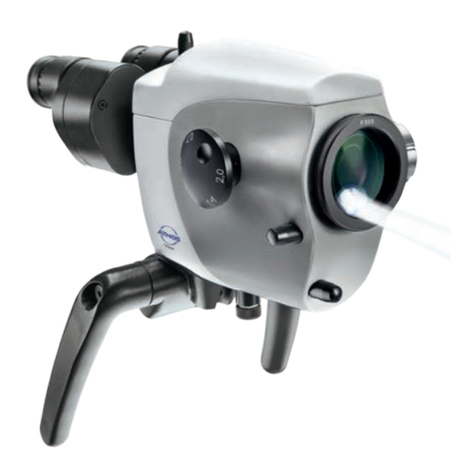
Atmos
Atmos i View 21 COLPO User manual
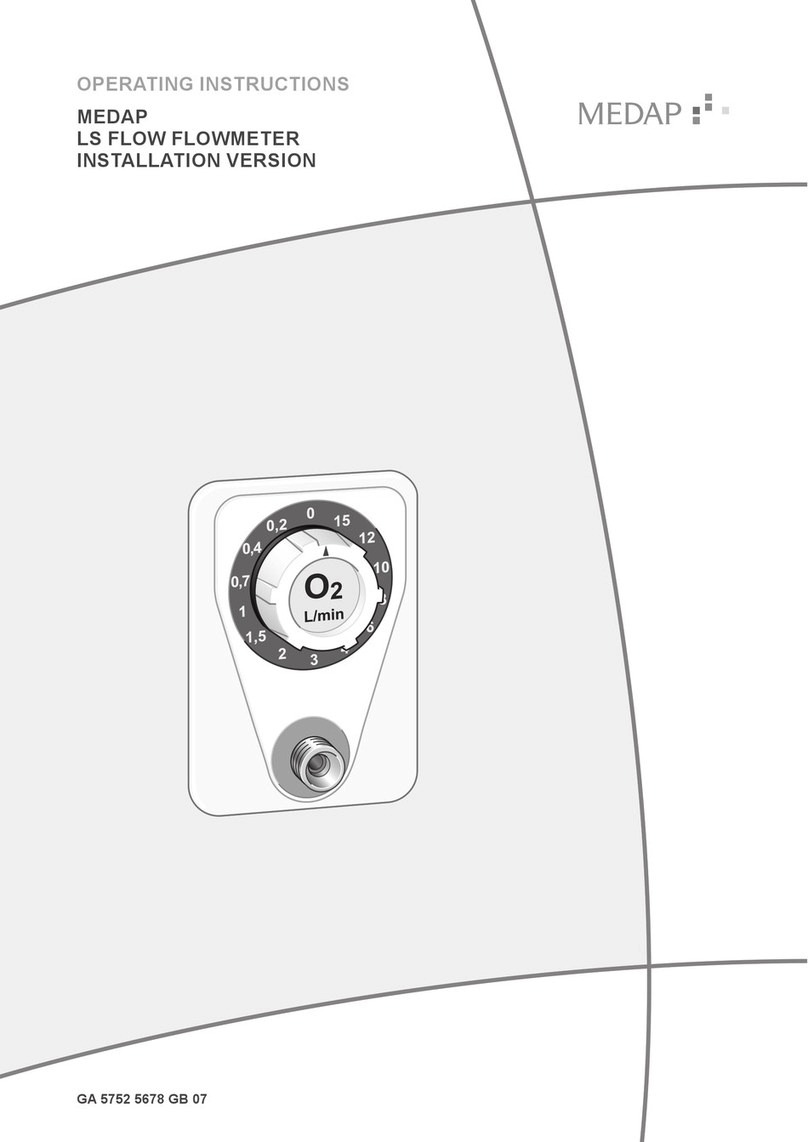
Atmos
Atmos MEDAP LS FLOW User manual
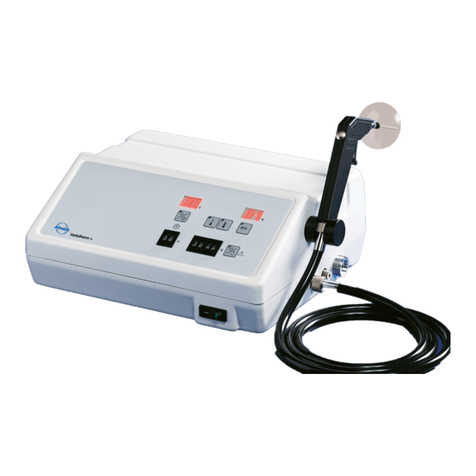
Atmos
Atmos Variotherm plus User manual
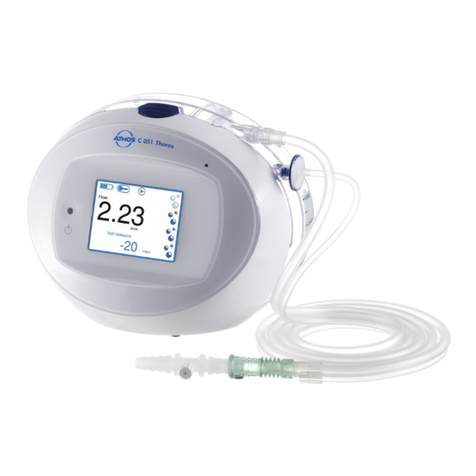
Atmos
Atmos C 051 Thorax User manual
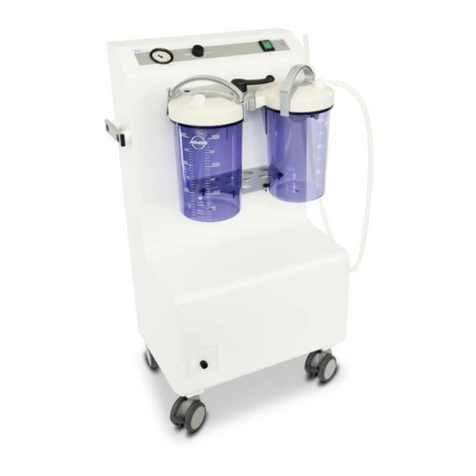
Atmos
Atmos Record 55 DDS User manual
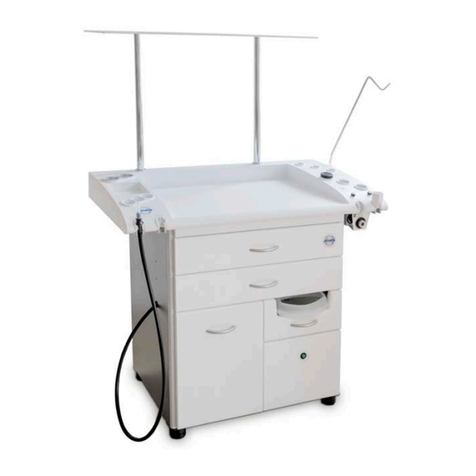
Atmos
Atmos C 11 Systema User manual
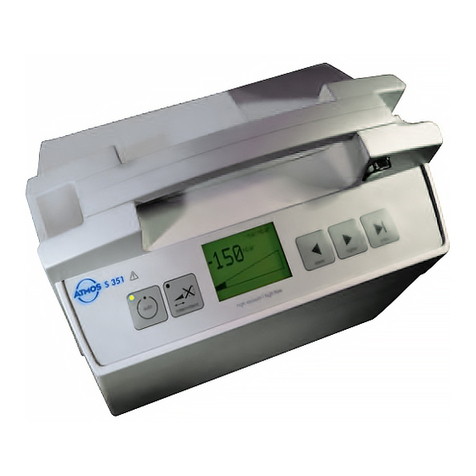
Atmos
Atmos S 351 User manual
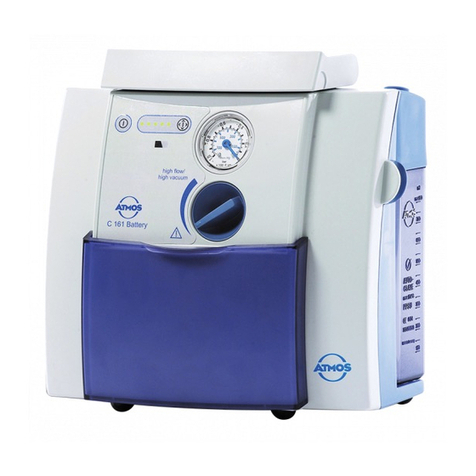
Atmos
Atmos C 161 User manual
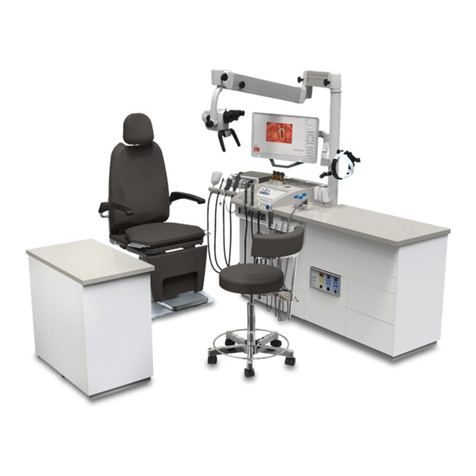
Atmos
Atmos S 61 CORIAN integral User manual
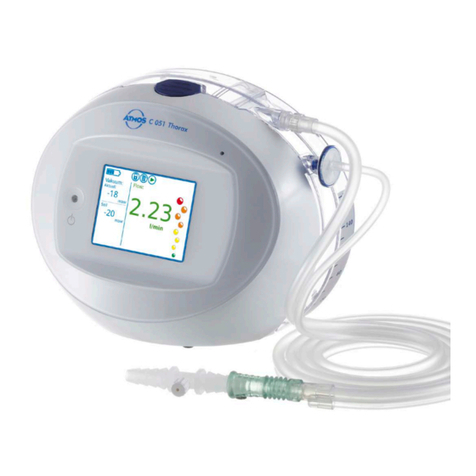
Atmos
Atmos C 051 Thorax User manual
